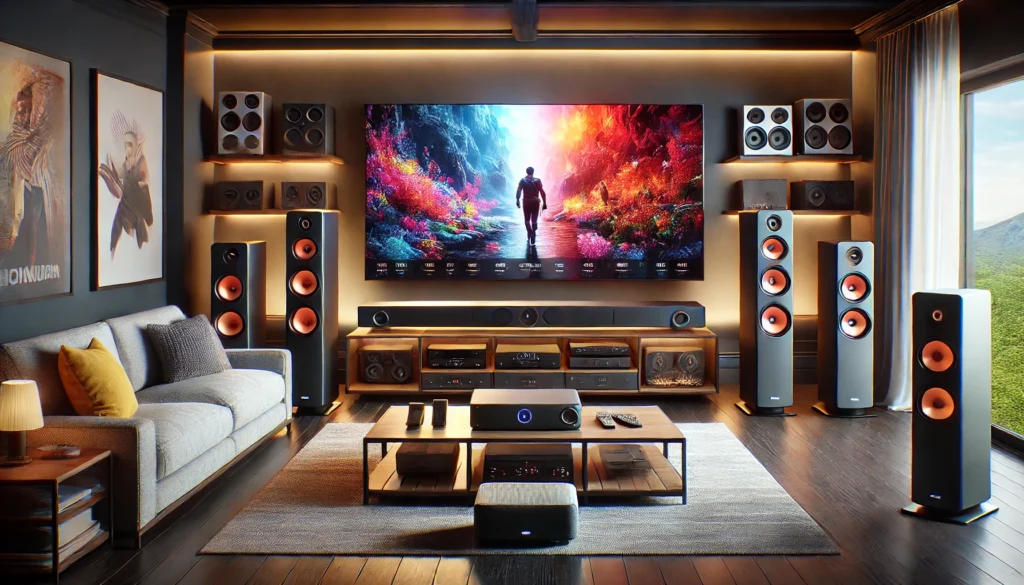Home Theater System Electronics Buying Guide
Welcome to the ultimate guide to Home Theater Systems! Whether you’re building a dedicated theater room or upgrading your living room setup, a home theater system can transform how you experience movies, music, and games. In this guide, we’ll help you navigate through the essential components, features, and tips to create a cinematic experience in your home.
Why Invest in a Home Theater System?
A home theater system provides unparalleled audio and visual quality, making you feel like you’re right in the middle of the action. From surround sound that captures every whisper to crystal-clear visuals, a well-chosen system can redefine entertainment at home.
Components of a Home Theater System
1. Television or Projector
A high-quality 4K TV or projector forms the centerpiece of your home theater.
Look for large screen sizes and HDR support for stunning visuals.
2. AV Receiver
Acts as the hub of your system, connecting and powering all components.
Choose one with multiple HDMI ports, support for Dolby Atmos, and compatibility with 4K/8K.
3. Speakers
A standard setup includes:
Front Speakers: Deliver most of the sound, including dialogue.
Center Channel Speaker: Focuses on dialogue clarity.
Surround Speakers: Add depth by delivering ambient and directional sounds.
Subwoofer: Handles deep bass for that cinematic rumble.

4. Streaming Device or Blu-ray Player
A high-quality 4K TV or projector forms the centerpiece of your home theater.
Look for large screen sizes and HDR support for stunning visuals.
5. Soundbars (Optional)
A simpler alternative to surround sound systems.
Many modern soundbars support Dolby Atmos and deliver impressive audio quality.
Key Features to Consider
1. Audio Formats
Look for systems that support Dolby Atmos, DTS:X, and other advanced formats for immersive sound.
2. Room Size and Layout
Choose speakers and systems that suit your room size. Larger rooms may require more powerful systems with multiple speakers.
3. Connectivity
Ensure compatibility with your TV, gaming console, or streaming devices.
Wireless options like Bluetooth and Wi-Fi make setup easier.
4. Power Output
Check the wattage to ensure the system delivers enough power for your desired sound levels.
5. Ease of Setup
Some systems require professional installation, while others are plug-and-play.
Tips for Setting Up Your Home Theater
Position Your Speakers Correctly: Follow the manufacturer’s recommendations for speaker placement.
Optimize Your Room: Use blackout curtains, carpets, and soundproofing to improve the audio-visual experience.
Calibrate Your System: Many AV receivers include calibration tools to optimize sound quality for your room.
Add Ambiance: LED lighting and comfortable seating can enhance the theater-like feel.
With the right home theater system, every movie night becomes an unforgettable experience. Explore your options and transform your home into an entertainment haven!
Disclaimer
Our buying guides are designed to help you make informed decisions by providing well-researched insights, product details, and expert recommendations. However, features, prices, and availability may change over time. We encourage you to verify information directly with manufacturers or sellers before purchasing. Your final choice should be based on personal research and preferences, and we are not responsible for any decisions made based on this guide.